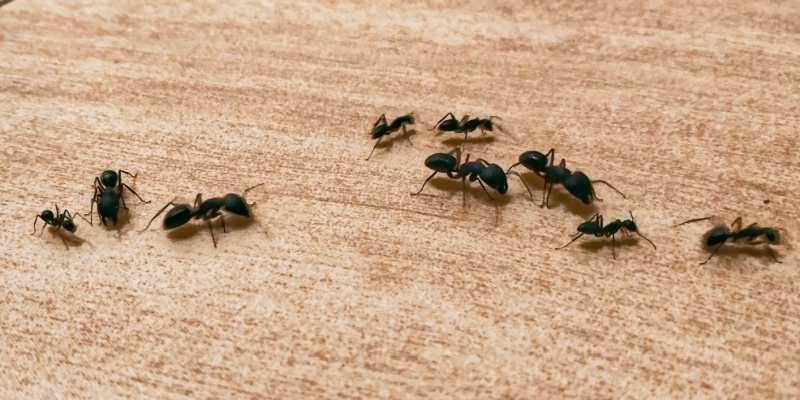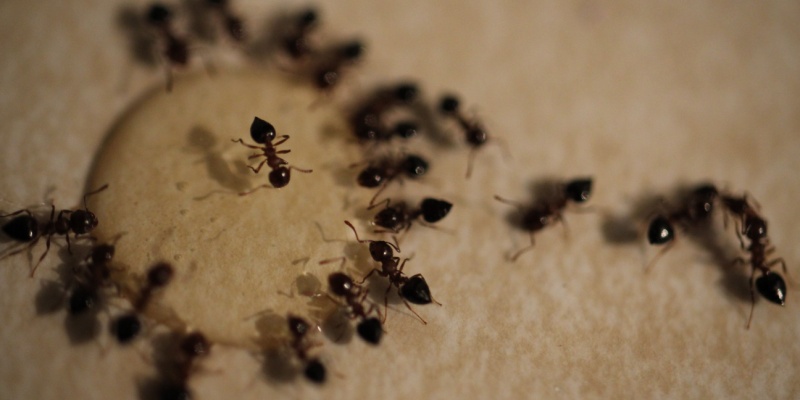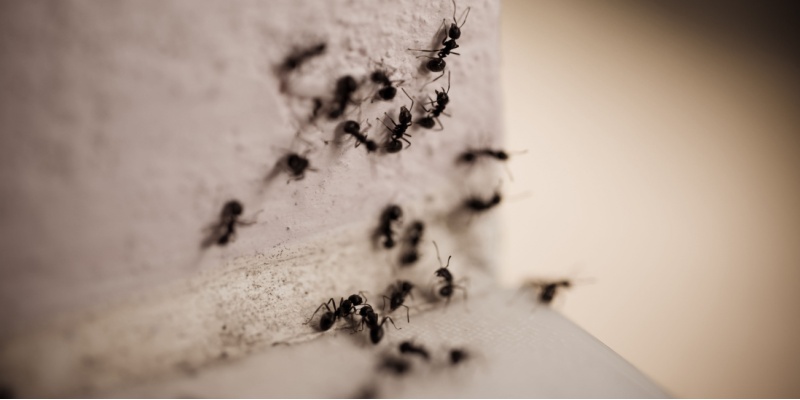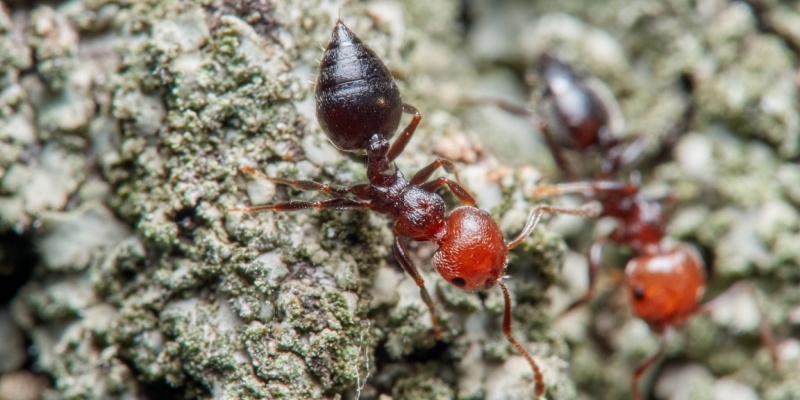When Indianapolis homeowners think about wood-destroying insects, termites typically come to mind first. However, carpenter ants pose a significant—and often overlooked—threat to residential structures throughout Central Indiana. These industrious insects can cause extensive damage while remaining largely out of sight. Understanding the risks they pose and recognizing early warning signs can help protect your most valuable investment.
What Makes Carpenter Ants Different?
Unlike termites, carpenter ants don’t actually eat wood. Instead, they excavate galleries and tunnels within wooden structures to create nesting spaces. This behavior leads to several key differences:
- Carpenter ants push wood shavings (called frass) out of their galleries, creating small piles that resemble sawdust
- They prefer wood that’s already softened by moisture or decay
- Their damage progresses more slowly than termite damage but can still be substantial over time
- Colonies can contain up to 50,000 workers and multiple satellite nests
These differences influence both how damage occurs and how infestations should be addressed.
Signs of Carpenter Ant Infestation
Many Indianapolis homeowners don’t realize they have carpenter ants until significant damage has already occurred. Watch for these warning signs:
- Large black ants indoors: Carpenter ants are among the largest ant species in Indiana, measuring 1/4 to 1/2 inch long
- Wood shavings: Small piles of sawdust-like material near wooden structures
- Hollow-sounding wood: Tapping on wood produces a hollow sound where galleries have been excavated
- Rustling sounds: Faint rustling noises within walls, especially at night when ants are most active
- Winged ants: Reproductive swarmers (flying ants) emerging indoors, particularly in spring and early summer
- Visible galleries: Smooth tunnels in exposed wood with no soil or mud (unlike termite damage)
Where Damage Commonly Occurs
In Indianapolis homes, carpenter ants typically target:
- Roof eaves and fascia boards: Especially those affected by ice dam leakage
- Window frames and door jambs: Areas exposed to moisture
- Deck support structures: Particularly where wood meets soil
- Wall voids: Especially near plumbing leaks or roof leaks
- Foundation sill plates: Where moisture from the foundation can affect wood
- Tree stumps and landscape timbers: Often serving as initial colony sites before moving to structures
The Financial Impact
While carpenter ant damage progresses more slowly than termite damage, the financial consequences can still be significant:
- Structural repairs can cost thousands of dollars
- Damage is rarely covered by standard homeowner’s insurance
- Unaddressed infestations continue to spread, increasing repair costs
- Damage weakens critical structural components, potentially creating safety hazards
Prevention Strategies
To protect your Indianapolis home from carpenter ant damage:
- Address moisture issues: Fix roof leaks, plumbing leaks, and improper drainage
- Eliminate wood-to-soil contact: Keep wooden structures at least 6 inches above soil
- Remove potential nesting sites: Clear dead stumps, logs, and wood debris from your property
- Trim vegetation: Keep branches from touching your home’s exterior
- Seal entry points: Caulk gaps around utility lines, windows, and doors
- Replace damaged wood: Don’t leave decay-compromised wood in place
Why Professional Treatment Is Essential
DIY treatments often fail against carpenter ants for several reasons:
- Colonies can be located deep within structures, beyond the reach of consumer products
- Satellite nests may remain undetected and untreated
- The main colony with the queen might be located outside the home
- Proper treatment requires specialized equipment and products
At Trio Pest Control, our approach to carpenter ant control includes:
- Thorough inspection to locate all colonies and nesting sites
- Identification of moisture sources contributing to infestation
- Targeted treatments that reach deep into galleries and wall voids
- Perimeter protection to prevent reinfestation
- Follow-up inspections to ensure complete elimination
Don’t Delay in Addressing Carpenter Ants
The longer carpenter ants remain active in your home, the more extensive the damage becomes. If you notice any signs of these wood-destroying pests, professional inspection and treatment should be a priority.
Contact Trio Pest Control today for comprehensive carpenter ant control that protects your Indianapolis home from these hidden dangers. Our experienced technicians will eliminate existing infestations and help prevent future damage.



